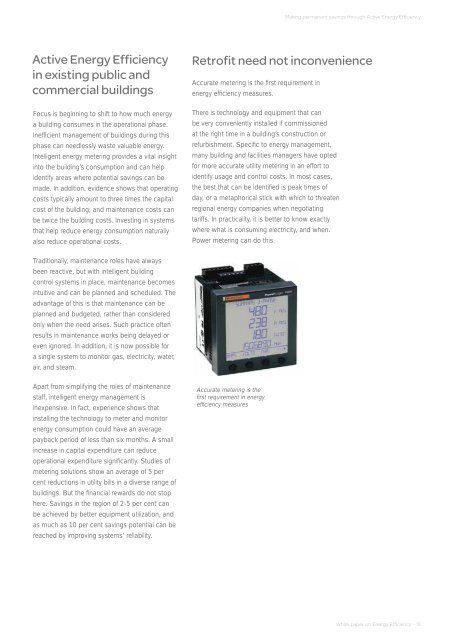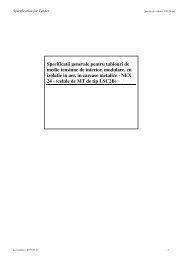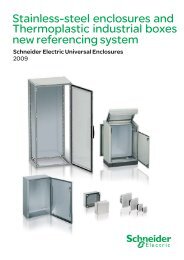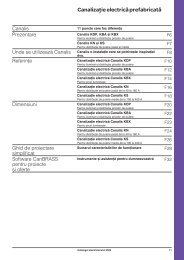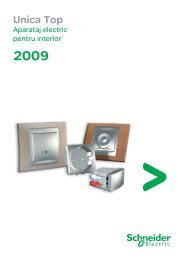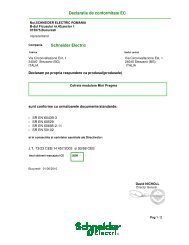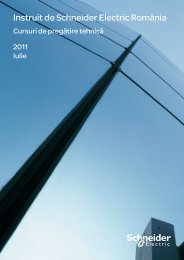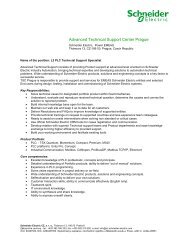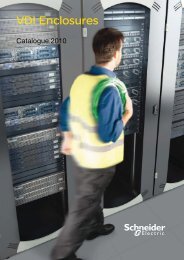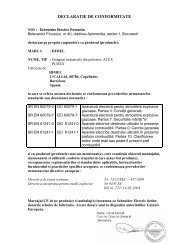Making permanent savings through Active ... - Schneider Electric
Making permanent savings through Active ... - Schneider Electric
Making permanent savings through Active ... - Schneider Electric
You also want an ePaper? Increase the reach of your titles
YUMPU automatically turns print PDFs into web optimized ePapers that Google loves.
<strong>Making</strong> <strong>permanent</strong> <strong>savings</strong> <strong>through</strong> <strong>Active</strong> Energy Efficiency<br />
<strong>Active</strong> Energy Efficiency<br />
in existing public and<br />
commercial buildings<br />
Focus is beginning to shift to how much energy<br />
a building consumes in the operational phase.<br />
Ineffi cient management of buildings during this<br />
phase can needlessly waste valuable energy.<br />
Intelligent energy metering provides a vital insight<br />
into the building’s consumption and can help<br />
identify areas where potential <strong>savings</strong> can be<br />
made. In addition, evidence shows that operating<br />
costs typically amount to three times the capital<br />
cost of the building; and maintenance costs can<br />
be twice the building costs. Investing in systems<br />
that help reduce energy consumption naturally<br />
also reduce operational costs.<br />
Retrofit need not inconvenience<br />
Accurate metering is the fi rst requirement in<br />
energy effi ciency measures.<br />
There is technology and equipment that can<br />
be very conveniently installed if commissioned<br />
at the right time in a building’s construction or<br />
refurbishment. Specifi c to energy management,<br />
many building and facilities managers have opted<br />
for more accurate utility metering in an effort to<br />
identify usage and control costs. In most cases,<br />
the best that can be identifi ed is peak times of<br />
day, or a metaphorical stick with which to threaten<br />
regional energy companies when negotiating<br />
tariffs. In practicality, it is better to know exactly<br />
where what is consuming electricity, and when.<br />
Power metering can do this.<br />
Traditionally, maintenance roles have always<br />
been reactive, but with intelligent building<br />
control systems in place, maintenance becomes<br />
intuitive and can be planned and scheduled. The<br />
advantage of this is that maintenance can be<br />
planned and budgeted, rather than considered<br />
only when the need arises. Such practice often<br />
results in maintenance works being delayed or<br />
even ignored. In addition, it is now possible for<br />
a single system to monitor gas, electricity, water,<br />
air, and steam.<br />
Apart from simplifying the roles of maintenance<br />
staff, intelligent energy management is<br />
inexpensive. In fact, experience shows that<br />
installing the technology to meter and monitor<br />
energy consumption could have an average<br />
payback period of less than six months. A small<br />
increase in capital expenditure can reduce<br />
operational expenditure signifi cantly. Studies of<br />
metering solutions show an average of 5 per<br />
cent reductions in utility bills in a diverse range of<br />
buildings. But the fi nancial rewards do not stop<br />
here. Savings in the region of 2-5 per cent can<br />
be achieved by better equipment utilization, and<br />
as much as 10 per cent <strong>savings</strong> potential can be<br />
reached by improving systems’ reliability.<br />
Accurate metering is the<br />
fi rst requirement in energy<br />
effi ciency measures<br />
White paper on Energy Efficiency - 15


